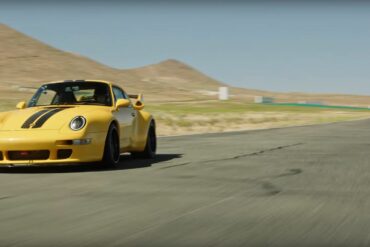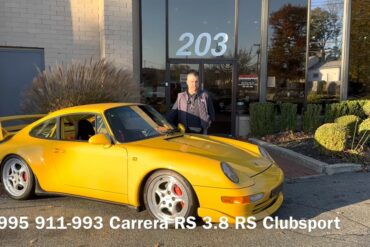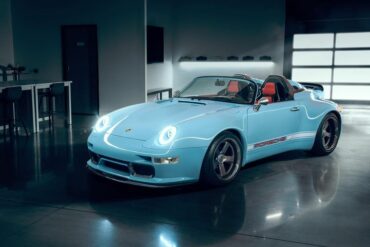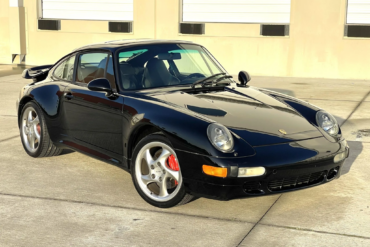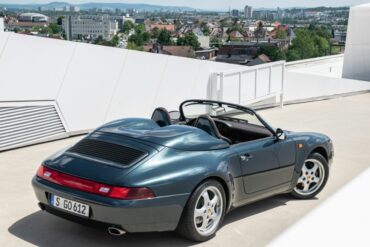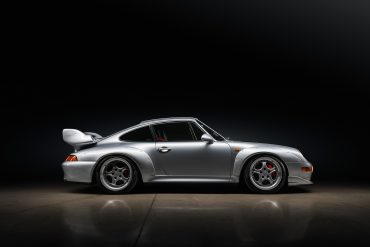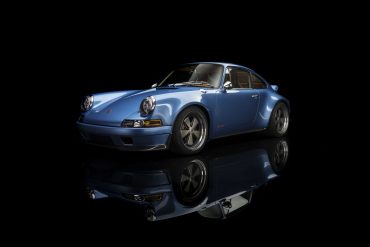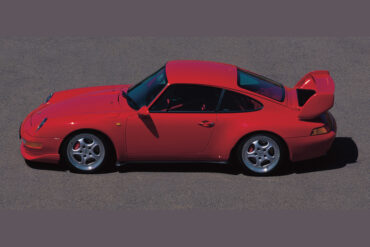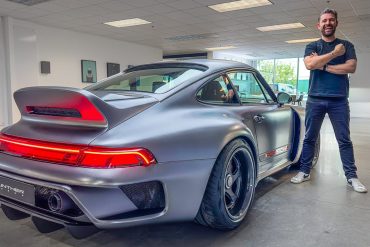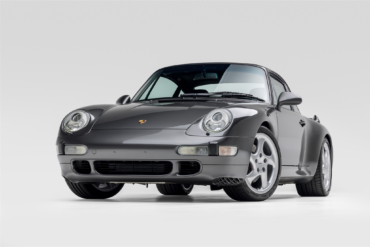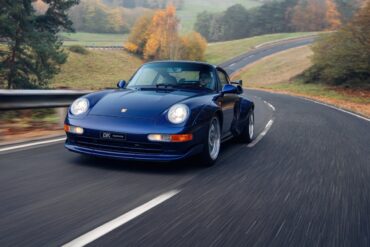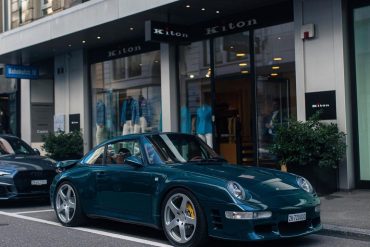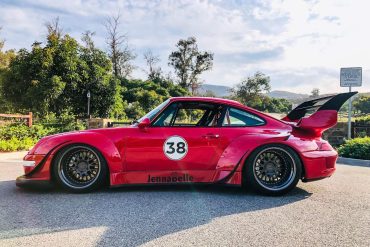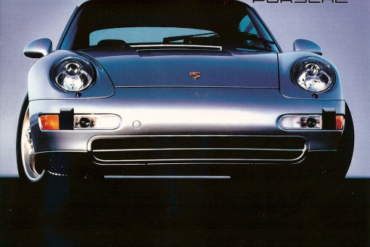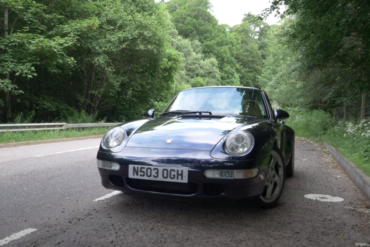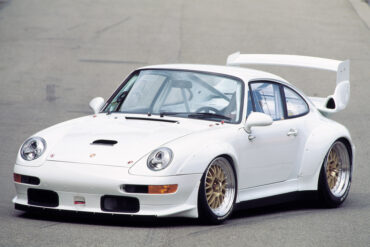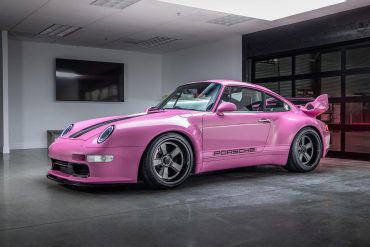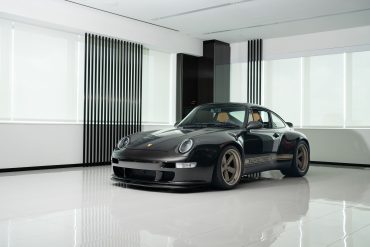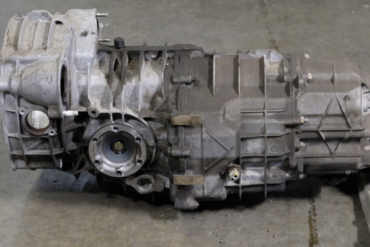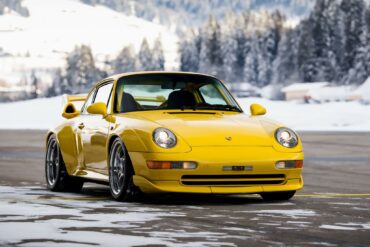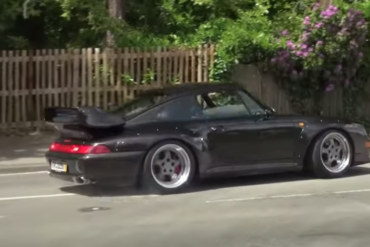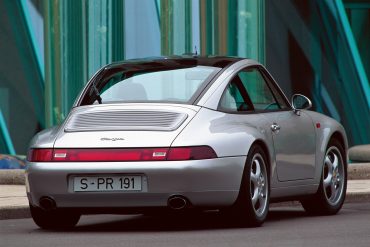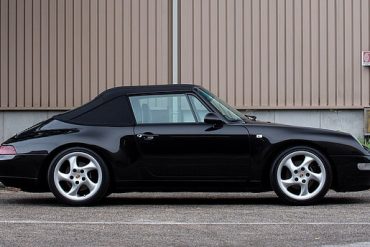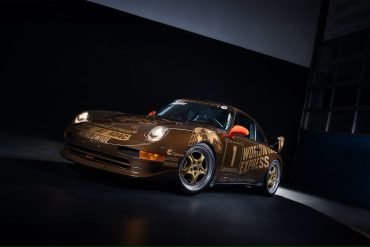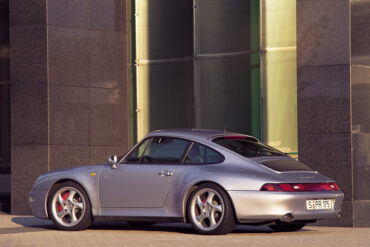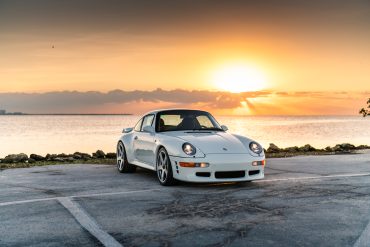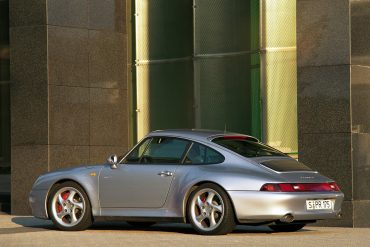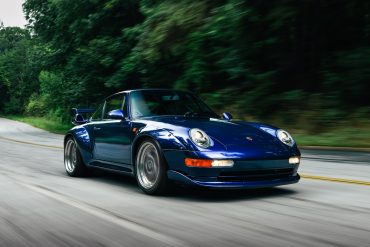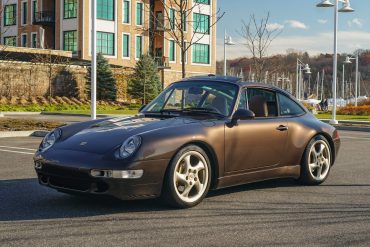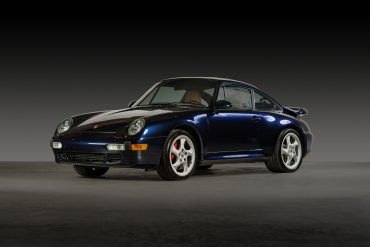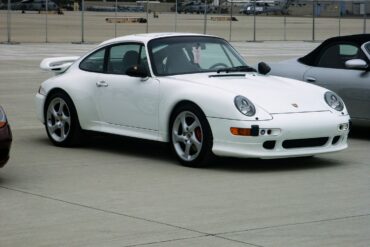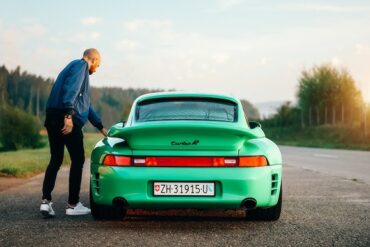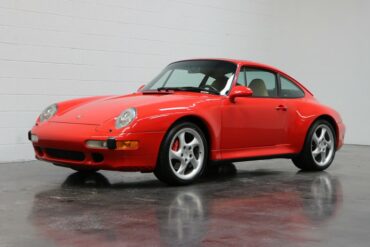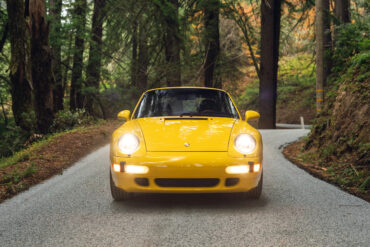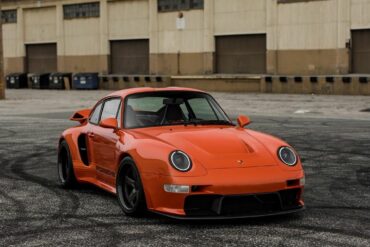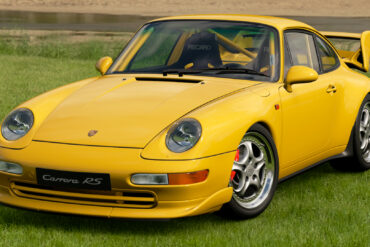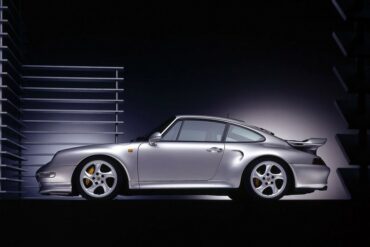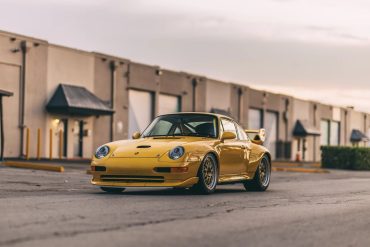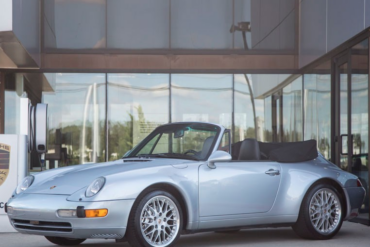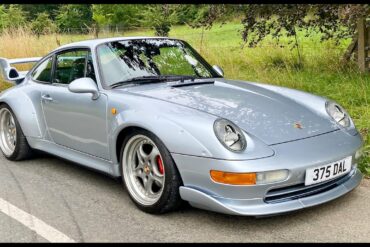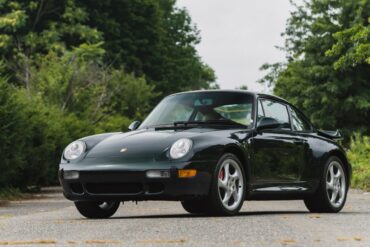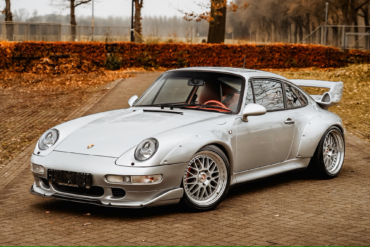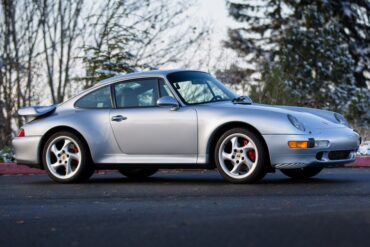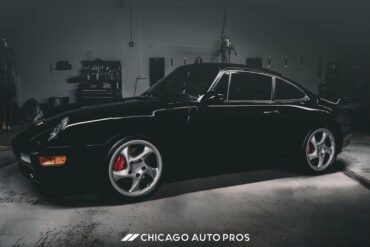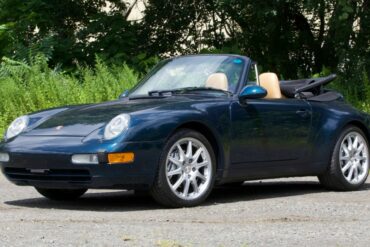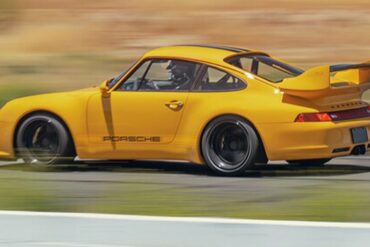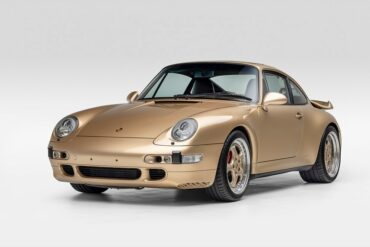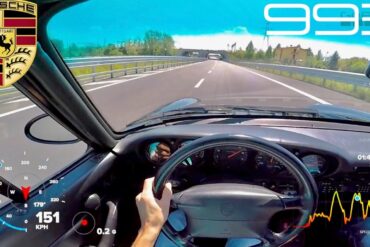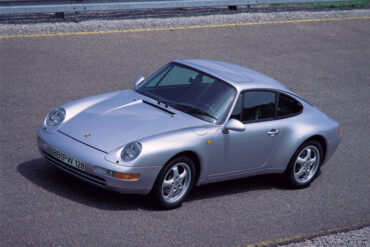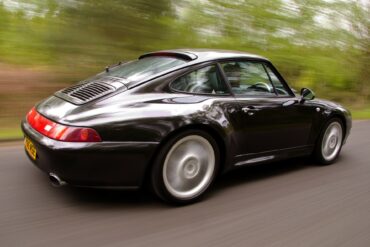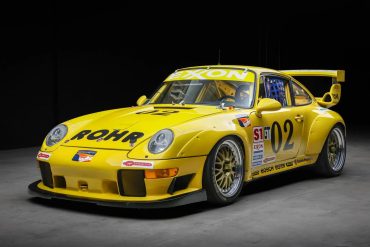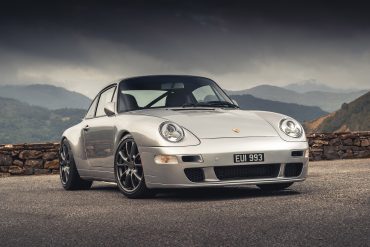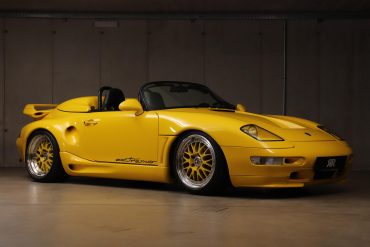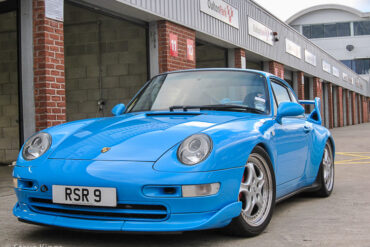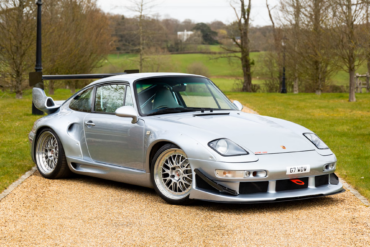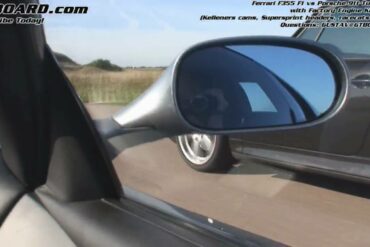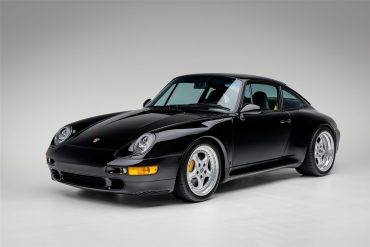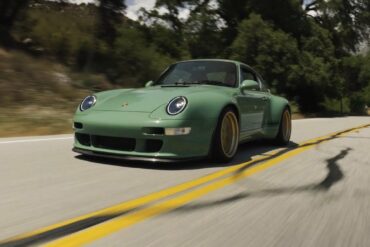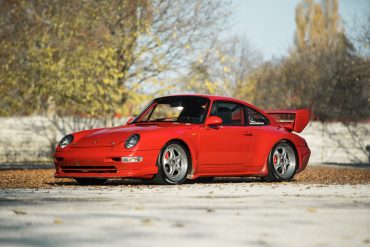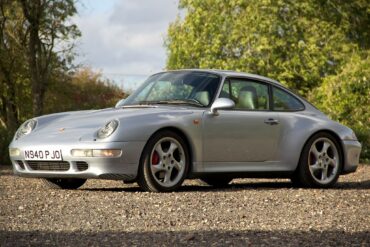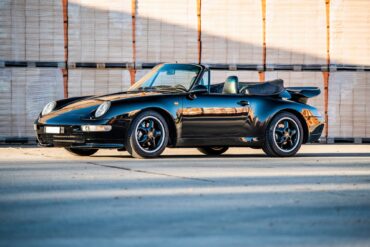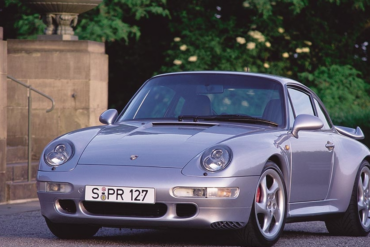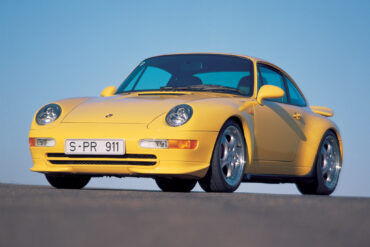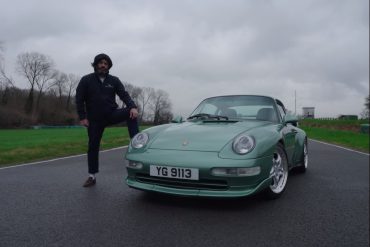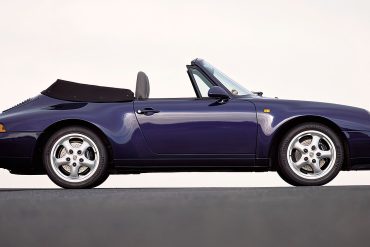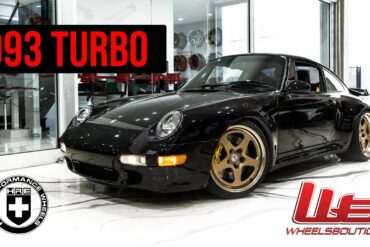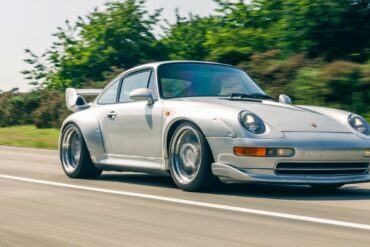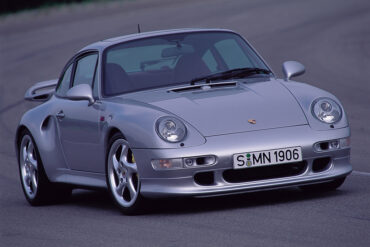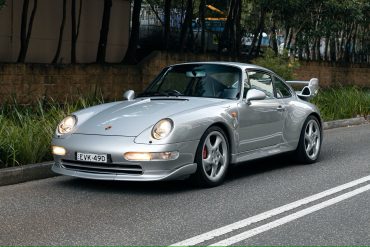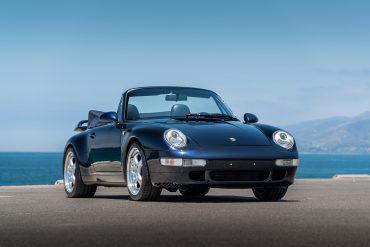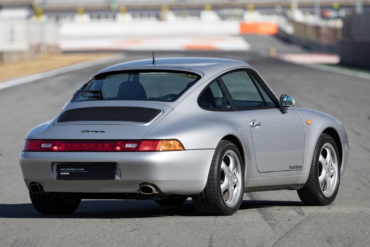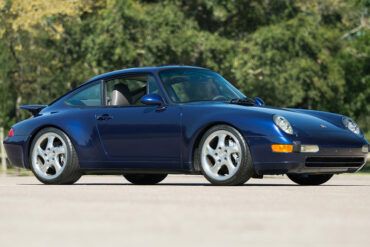It’s no secret that when you make the same type of car for decades, you obviously learn many little tricks...
Featuring the Speed Yellow finished Factory Clubsport 1995 911/993 Carrera RS 3.8 Clubsport. Concours-ready, 1 of only 227 examples built,...
Porsche 993 Speedster Remastered By Gunther Werks finished in Gulf Blau. Photo Source: Gunther Werks...
The Porsche 911 Turbo also known as the 993 was available between late 1995 to 1998. Powered by a twin-turbocharged...
Porsche faithful are probably shaking their heads right about now. Porsche never officially made a production 993 Speedster. Notice we said “production.” In 1995, the company created a dark green 993 Speedster for Ferdinand “Butzi” Porsche 60th birthday. Jerry Seinfeld apparently felt left out; he commissioned a silver 993 Speedster in 1998, though it seemed to have begun life as either a Targa or Cabriolet before being sent to Porsche Exclusive. Only two 993 Speedsters were ever made; if you see one that’s not silver or dark green, chances are it’s a phony. The rarest among these models is the 911 Speedster.
The 993 Porsche 911 GT2 (or GT as it was initially called) was built in order to meet homologation requirements...
The Kaege Retro Turbo is based on a Porsche 993 Turbo. It offers all-wheel drive and more than 450 hp!...
Autocar Drives the Gunther Werks 993 And in this vid is a rather serious take on the theme. California-based Gunther...
The 993 Carrera RS Clubsport, 213 of which were built to meet the FIA GT2 homologation requirements, is a race-ready, although street legal variant of the 993 Carrera RS, not to be confused with the track only 993 Carrera Cup RSR. Emphasizing its competition credentials, the 993 Carrera RS Clubsport came with a welded-in roll cage as standard, considerably increasing its rigidity, racing bucket seats, six-point safety harnesses, battery isolator switch, fire extinguisher, and a huge fixed rear wing, the latter also available on the 'base model' Carrera RS.
A couple of days ago, California-based specialist Gunther Werks revealed their latest creation, the Touring Turbo Edition Coupe, at The...
Bring A Trailer is currently offering a gorgeous example of a 1997 Porsche 911 Turbo, one of the marque’s final...
Live now on DK Engineering is a one-of-one example of a 1996 Porsche 911 (993) GT2 finished in paint to...
Ruf released the Turbo R Limited in 2016, paying homage to the original Turbo R. Only seven units were produced,...
The third example commissioned at Rauh-Welt Begriff Los Angeles, “JennaBelle,” was individually crafted according to custom specifications by RWB’s founder,...
Porsche 911 Sales Brochures (Type 993) After lots of digging and searching, we have found only two Porsche sales brochures...
DRIVEN: Midnight Blue Porsche 993 911 Turbo In this video, courtesy of the Porsche Club of Great Britain (Region 2)...
The Porsche 911 GT2 Evo represented the top specification ever produced for any air-cooled Porsche. Designed to compete in FIA GT1, it incorporated a twin turbocharged 3.6L flat-6 engine rated at a full 600 HP and 491 lb-ft of torque. As compared to the standard 993 GT2, Porsche widened the rear fender extensions to cover wider modular wheels and added a new front spoiler with inlets for oil and brake cooling. A second deck appeared on the already outlandish rear spoiler, which could be mounted higher in the air stream for added downforce. Approximately 11 samples were produced.
Gunther Werks, a California-based Porsche specialist, has unveiled an awe-inspiring restomod of the Porsche 911 (993) at the esteemed Goodwood...
The 993-generation 1997 Porsche 911 Remastered by Gunther Werks stands as a sports car that continues to captivate even more...
Porsche 911 (993) Transmission Codes The transmission number code is found on the transmission data plate. There were two codes...
This rare 1996 Porsche GT2, originally designed for GT2 class racing, is based on the 993 Turbo. It features widened...
Porsche 993 GT2 “Drive It Like You Stole It” Video I was invited by @9ine11 to check out his epic...
1997 Porsche 911 Targa (993) Technical Specifications Engine Type Flat 6 Induction Naturally Aspirated Cooling Air/oil-cooled Valvetrain Single overhead camshaft...
2,500 cabriolets were made in the 993 Carrera 4. The 993 Carrera 4, sold between 1995 and 1998, uses the same powerplant as the standard 993 Carrera, but puts power down to all four wheels through a 6-speed manual transmission. A “Carrera 4” badge on the tail, along with silver-painted brake calipers and clear front and side turn signals, help distinguish the all-wheel drive C4 from the C2 sibling.
Based on the 993 Carrera 2 coupe, the 993 Cup 3.8 was developed at Porsche’s competition department to replace the...
In 1993, Porsche introduced the Type 993, widely regarded as the most user-friendly and elegantly designed 911. Over the years,...
After introducing the Porsche Carrera S with the body carried-over from the Turbo version, customers asked about an all-wheel-drive version for it. The 993 Carrera 4S was sold between 1995 to 1998. Much like the 993 Carrera S, the 993 Carrera 4S takes the 993 Carrera 4 powertrain and fits it into the widebody 993 Turbo shell, sporting 18" alloy wheels. The engine was the same 3.6-liter naturally aspirated, but it was offered in the higher power output of 285 hp. As with the Carrera 4, it was only available with a 6-speed manual transmission. The 4S did not have a cabriolet version.
Starting as a modest service station in Pfaffenhausen, Germany, within a mere three decades, RUF quickly evolved into a hub...
1998 Porsche 911 Carrera 4S (993) Technical Specifications Engine Type Flat 6 Induction Naturally Aspirated Cooling Air/oil-cooled Valvetrain Single overhead...
If you want the ultimate version of the air-cooled 911, then you should get this 1996 Porsche 911 GT2 currently...
The GT2 was the hardcore, race-focused version of the 993 Turbo, using essentially the same 3.6 L twin-turbocharged engine, but...
This 1996 Porsche 993 Carrera Targa, one of only 462 units produced for the U.S. market in its model year...
This is the last of the aircooled 911 turbos. Porsche introduced the Turbo for the 1995 model year. It had...
1994-1998 Porsche 911 (993) Carrera, Carrera S, Carrera 4, Carrera 4S, Turbo Service Schedule This maintenance service schedule checklist is...
Morning Run In a 993 Turbo by RUF 6am Air cooled Porsche sunrise drive to buy some coffee. Is there...
1998 Porsche 911 Carrera 4 (993) Technical Specifications Engine Type Flat 6 Induction Naturally Aspirated Cooling Air/oil-cooled Valvetrain Single overhead...
This 1996 Porsche 993 Turbo has a Paint to Sample Ferrari Giallo (yellow) finish matched with Black Supple Leather interior....
Gunther Werks’ latest creation, Project Tornado, is a road-legal coupe that follows the company’s tradition of building models around the...
1995-1996 Porsche 911 Carrera RS 3.8 Clubsport (993) Technical Specifications Model Porsche 911 Carrera RS 3.8 (993) Model Years 1995...
1998 Porsche 911 Turbo (993) Technical Specifications Engine Type Flat 6 Induction Twin-turbocharged Cooling Air/oil-cooled Valvetrain Single overhead camshaft Injection...
In 1993, Porsche introduced the Type 993, considered by many as the most beautiful 911. After years of aerodynamic and...
The demise of the FIA World Sportscar Championship in 1992 left a void in international GT racing, but the emergence...
1996 Porsche 911 Carrera 4 Cabriolet (993) Technical Specifications Engine Type Flat 6 Induction Naturally Aspirated Cooling Air/oil-cooled Valvetrain Single...
Is this road racer special the ultimate air-cooled 911 turbo? The Porsche 911 GT (better known as the 993 GT2)...
Porsche 911 (993) (1993 – 1998) Story & History Type 993 – The 4th Generation Porsche 911 Premiere: 1993 September...
This 1996 Porsche 911 (993) Turbo has been modified to resemble the iconic GT2 homologation special look that every car enthusiast...
The 993 Turbo was available between late 1995 to 1998. Powered by a twin-turbocharged 3.6 liter flat six, it was rated at 402-horsepower. It’s distinguished easily from the rear, as the whale-tail spoiler is quite deep to house the intercoolers meant to cool the intake charge. This extra power might have been a handful for street drivers, so all-wheel drive from the 993 Carrera 4 added traction at all four corners. Approximately 6,000 coupes were made. Although powered by a different engine, a limited production 993 Turbo Cabriolet was available in the early days of the 993 generation. A more powerful 993 Turbo S was also introduced in 1997.
Chicago Auto Pros Gives This 993 Turbo The Ultimate Detail Treatment We spent 130 man hours with this 993 Porsche...
1995 Porsche 911 Carrera 4 Cabriolet (993) Technical Specifications Engine Type Flat 6 Induction Naturally Aspirated Cooling Air/oil-cooled Valvetrain Single...
A Legend Remastered, Driven by Randy Pobst Randy Pobst gets behind the wheel of Gunther Werks’ Remastered 993 and dives...
The 993 Turbo was available between late 1995 to 1998. Powered by a twin-turbocharged 3.6 liter flat six, it was...
POV Drive in A Porsche 911 Carrera (993) Today I’m gonna present you a very SPECIAL car, an ICON of...
Porsche Option Codes – Porsche 911 Type 993 (1994 Model Year) Looking to decode your 1994 Porsche 911 option codes?...
1997 Porsche 911 Carrera S (993) Technical Specifications Engine Type Flat 6 Induction Naturally Aspirated Cooling Air/oil-cooled Valvetrain Single overhead...
Ruf’s follow-up to the iconic “Yellowbird” debuted in 1995, based on the new 993 Turbo chassis. Maintaining the original’s themes...
Developed by Porsche to fulfill FIA GT racing homologation requirements, the 993 GT2 was derived from the 993 Turbo. It...
The Autoart 993R is a tribute to the driving experience of a 911. It brought together the narrow-bodied, air-cooled 993-series...
The Porsche you see here is an exceptionally beautiful car and one of just two ever created by Gemballa GmbH,...
Porsche 993 Carrera RS ‘RSR 9’ parked in the pit lane at the 10th RS Track Day Oulton Park, March...
Gemballa, located in Leonberg, Germany, near Stuttgart, has been modifying Porsches since 1981 when the founder, Uwe Gemballa, established the...
Ferrari F355 vs Porsche 911 Turbo (993) Ferrari F355 F1 vs Porsche 911 Turbo (993) with Engine Kit 430 HP...
This 1997 Porsche 993 Carrera S finished in sleek Black with a black leather interior, underwent an extensive custom rebuild spanning...
The Gunther Werks 993 The Drive returns to the Gunther Werks headquarters to get an insider’s look at the new...
The Carrera RS Clubsport, a track-oriented variant of the Carrera RS, prioritized performance over road comfort. Featuring a fully welded...
1997 Porsche 911 Carrera 4S (993) Technical Specifications Engine Type Flat 6 Induction Naturally Aspirated Cooling Air/oil-cooled Valvetrain Single overhead...
The Porsche 911 Turbo Cabriolet (993 generation) is an incredibly rare car – only 14 were built in 1995, in the early days of 993 production. Rather than the contemporary twin-turbo powerplant in the 993 Turbo Coupe, the 993 Turbo Cab was fitted with the single turbo of the 964 Turbo 3.6. Although the Turbo Coupé was introduced earlier, the actual production started after the Turbo Cabriolets were sold. Turbo Cabriolets were 1995 models by VIN and Turbo Coupés were immediately produced as 1996 models although the 1996 model year had not yet started.
Porsche only produced two original 911 Speedsters, one of which was specifically made for Ferdinand Alexander Porsche, the designer of...
The “Carbon Noire Commission” is a remastered version of the 911s based on the 933-generation by Gunther Werks. The car’s...
1996 Porsche 911 Turbo (993) Technical Specifications Engine Type Flat 6 Induction Twin-turbocharged Cooling Air/oil-cooled Valvetrain Single overhead camshaft Injection...
The 993 Carrera RS is a lightweight, stiffer version of the naturally-aspirated 993 Carrera meant for ultimate street performance. At its heart was the 3.8-liter normally aspirated Type M64/20 engine producing 300 bhp at 6,500 rpm along with 262 foot-pounds of torque at 5,400 rpm. Looking to save as much weight as possible, every non-essential item from the car was removed. The Carrera RS tipped the scales at a 1,280 kg. About 1,000 Carrera RS were built, making it one of the rarest and most collectable 993-generation 911's produced. In addition to the Base Trim it was also available as the race-ready, street legal, RS Clubsport (option M003).
Tuthill Porsche has earned acclaim in the rally world, transforming road cars into formidable rally beasts. Notably, they collaborated with...
Introduced in 1994 the Porsche 911 Cabriolet was more of a Grand Tourismo vehicle than a sports car. The 911 Cabrio featured the same cues as its coupe version, but with a few differences apart from the lack of a fixed roof, of course. The 3.6-liter engine was offered in two versions, with 275 hp and 285 hp. The latter featured the VarioCam system. Both versions were mated to either a 6-speed manual or a 4-speed automatic.
Porsche 993 Turbo Gets A 2020 Refresh With HRE Wheels + More Goodies An interesting update to a classic 911....
Ultimate Air-Cooled 911 – Porsche 993 GT2 Among Porsche connoisseurs, there is one modern 911 that stands out as the...
The 993 Turbo S, available between 1997 and 1998, bumped the power from the standard 993 Turbo up to 450hp (430 for the United States market) with larger turbochargers and a modified engine management system. The Turbo S was fitted with more luxury trim bits on the interior – with more leather and carbon fiber than on the standard Turbo. A larger rear wing was installed as well. Only 345 were built. Its direct successor was the 996 Turbo S for model year 2005.
The Porsche 993 Turbo, introduced during the 993 generation of the 911, revolutionized the sports car landscape. With a 400...
While the 911 Turbo Cabriolet has become a common sight since the 996 generation, the 993 Turbo Cabriolet is a...
Porsche 911 (993) Sales & Production Numbers The Porsche 911 (type 964) was considered a sales success, so when the...
The Porsche 911 GT2, primarily built for racing but still road-legal, has a lineage tracing back to the iconic 1973...
1996 Porsche 911 Carrera 4 (993) Technical Specifications Engine Type Flat 6 Induction Naturally Aspirated Cooling Air/oil-cooled Valvetrain Single overhead...
No More Content


